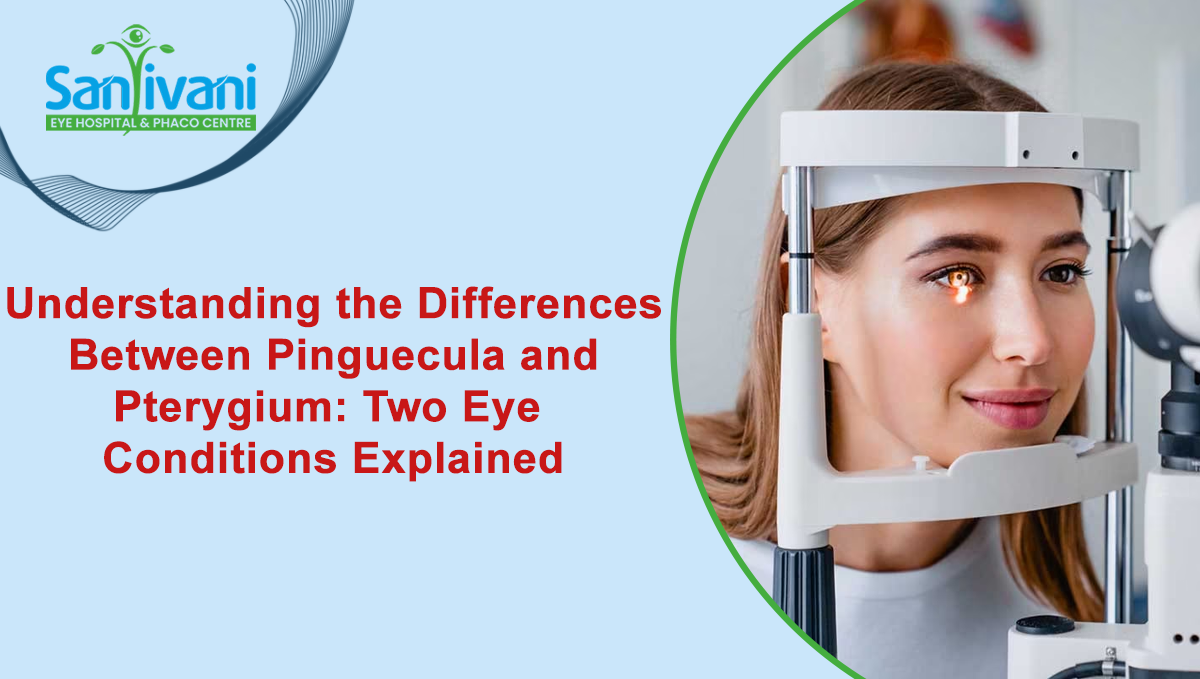
Understanding the Differences Between Pinguecula and Pterygium: Two Eye Conditions Explained
Introduction
Eye health is crucial for overall well-being, and various conditions can affect the delicate structures of the eye. Pinguecula and pterygium are two common eye conditions that often cause confusion due to their similar-sounding names. In this article, we will delve into the differences between pinguecula and pterygium, exploring their causes, symptoms, and potential treatments.
Pinguecula :
A pinguecula is a non-cancerous growth on the conjunctiva, the clear tissue that covers the white part of the eye (sclera). This condition is typically characterized by a yellowish, raised bump on the conjunctiva, which is most commonly found on the side of the eye nearest to the nose. Pingueculae are often associated with exposure to ultraviolet (UV) light, such as sunlight, and are more prevalent in individuals who spend a significant amount of time outdoors.
Causes :
The primary cause of pinguecula is believed to be prolonged exposure to environmental elements, especially UV radiation. Other factors contributing to its development include dust, wind, and dry climates. Individuals who work in occupations with high sun exposure, such as agriculture or construction, may be at an increased risk.
Symptoms :
Pinguecula is usually asymptomatic, meaning it does not cause noticeable discomfort. However, some individuals may experience dryness, irritation, or a feeling of having a foreign body in the eye. Redness and inflammation can occur, especially when exposed to irritants.
Prevention and Treatment
Preventive measures for pinguecula include wearing sunglasses that offer UV protection and using artificial tears to alleviate dryness. In cases of irritation or inflammation, topical steroids may be prescribed by an eye care professional. Surgical removal is rarely necessary unless the pinguecula causes significant discomfort or interferes with vision.
Pterygium :
A pterygium, like pinguecula, is a growth on the conjunctiva. However, it is more invasive and can extend onto the cornea, the clear front surface of the eye. Unlike pinguecula, a pterygium is not a discrete bump but appears as a wedge-shaped, fleshy tissue that may slowly encroach upon the cornea. Pterygia are often associated with prolonged sun exposure and may develop in individuals living in sunny climates.
Causes :
Pterygium symptoms can include redness, irritation, blurred vision, and a gritty or burning sensation. As the growth progresses onto the cornea, it may affect the refractive surface of the eye, leading to astigmatism or other vision disturbances.
Symptoms :
Similar to pinguecula, excessive exposure to UV light is a major factor in the development of pterygium. Chronic irritation from dust, wind, or dry air may also contribute to its formation. Genetic predisposition and a history of outdoor activities without adequate eye protection are additional risk factors.
Prevention and Treatment
Preventing pterygium involves protecting the eyes from excessive UV exposure with sunglasses and hats. Lubricating eye drops can help alleviate dryness and irritation. In cases of significant symptoms or visual disturbances, surgical removal may be considered. However, recurrence is possible, and close monitoring is essential post-surgery.
Distinguishing Factors :
While pinguecula and pterygium share similarities, there are key differences that help distinguish between the two conditions:
- Appearance : Pinguecula typically presents as a yellowish bump on the conjunctiva, whereas pterygium appears as a fleshy, wedge-shaped growth that may extend onto the cornea.
- Location : Pinguecula is commonly found on the side of the eye closer to the nose, while pterygium grows from the nasal side toward the center of the cornea.
- Invasiveness :Pinguecula is generally non-invasive and remains on the conjunctiva, while pterygium can invade the cornea and affect vision.
Conclusion
Understanding the differences between pinguecula and pterygium is crucial for proper diagnosis and management. Both conditions are influenced by environmental factors, with UV exposure being a common risk factor. While pinguecula is usually benign and may not require intervention, pterygium, if causing significant symptoms or visual disturbances, may necessitate surgical